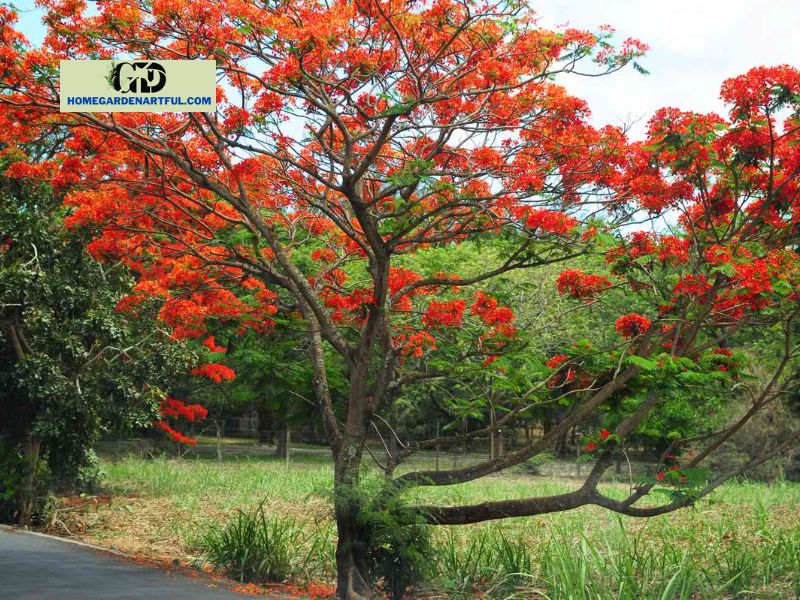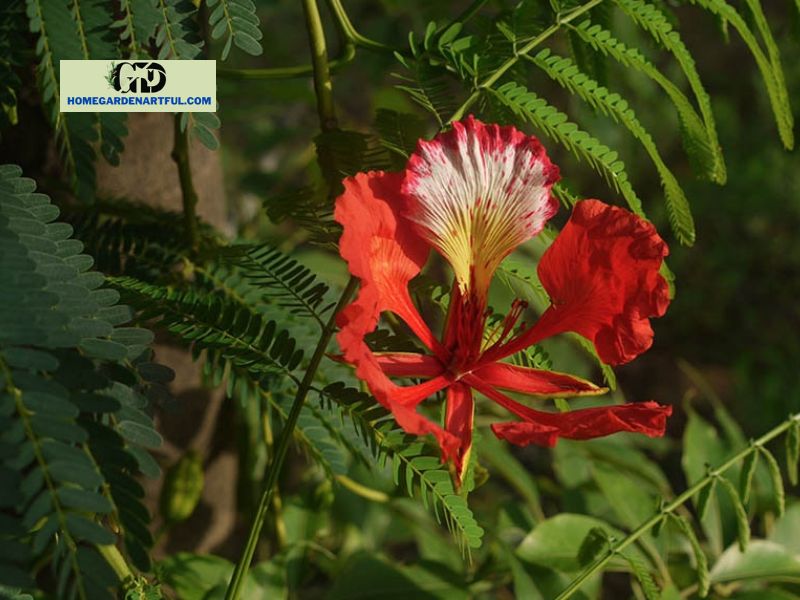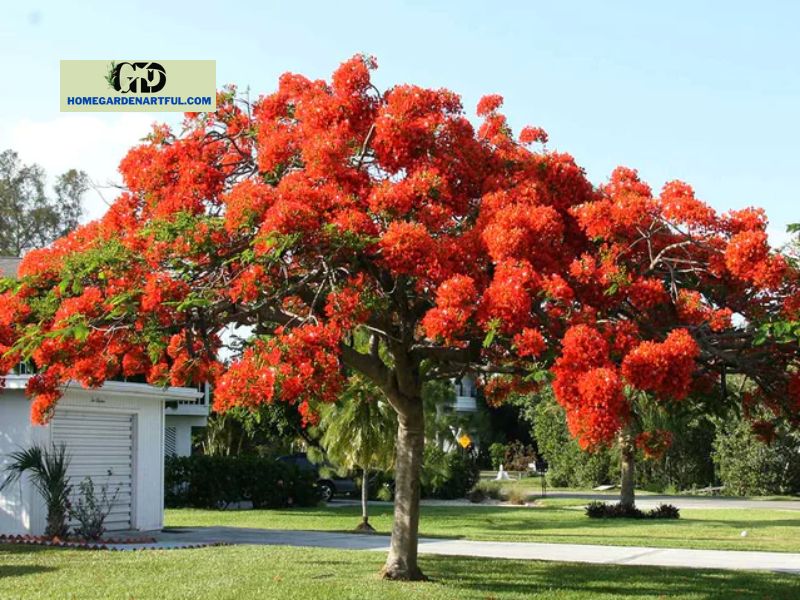If you want to add another plant to your landscape, a Flame Tree bonsai is a great option. Every eye is drawn to its attractive red umbrella appearance, which transforms the atmosphere of your living space whether it is indoors or out.
The Royal Poinciana, also known as Delonix regia, is a subtropical plant. It starts out green, but as it develops, it turns bright red, earning the moniker “Flame Tree Bonsai.”
It is challenging to take care of a bonsai tree since it has specific requirements, is frequently neglected, and doesn’t produce the intended outcomes. In this situation, having an appropriate advisor is vital, and that is where we come in. Discover at homegardenartful.com!
Care For Flame Tree Bonsai

The magnificent Delonix regia prefers to dwell in a bright, wind-protected area outside in the garden throughout the entire growing season. They enjoy being kept warm. The flame tree can be cultivated on a sunny window sill, though it loves to be outside. The tree cannot handle any dramatic temperature decreases, so be sure to closely monitor nighttime temperatures.
The tree should be kept indoors or in a heated conservatory or greenhouse, according to bonsai specialists. The flame tree must be kept between 10 and 20 degrees Celsius from autumn until April. The flame tree will have to rest in its dormant period without leaves for a longer period the cooler and darker the overwinter space is.
In deciduous trees, photosynthesis stops in the winter, while in evergreen species, it slows to a trickle. Trees from tropical and subtropical regions are typically more sensitive to cold. It’s crucial to get your tree ready for the winter. Trees produce sugars and carbohydrates that prevent them from freezing. In order to guarantee that your tree has all of the necessary nutrients available for the winter, it is crucial to ensure that it is nourished well during the growth season.
Bring your tree outside in the garden or on a sunny ledge when the cold nights are absolutely over so it may spread out, take in the warmth on its branches, and thrive.
Water Requirements
The flame tree will require a lot of water throughout the summer months when it is growing. You’ll need to practice using caution when watering. Every day, check the loam. Water the bonsai just when the soil appears to be “almost” dry. Don’t overwater the tree; doing so could cause root rot and cause the tree to lose all of its leaves and eventually die. Your flame tree may endure brief droughts on occasion.
The tree will shed its leaves over the winter months when it is dormant, requiring significantly less water. Avoiding hard calcareous water, which naturally has a higher pH value since the flame tree prefers a pH value between 4.50 and 7.50.
Soil And Fertilizing

During the developing stage, your Flame Tree Bonsai will require a lot of nutrients to develop its lovely leaves and vivid blossoms. As a result, it will need to be fertilized with liquid every week and solid organic fertilizer every four weeks. Make careful to apply fertilizers that are properly balanced. To encourage wholesome growth and ideal blooms, nitrogen (N), phosphorus (P), and potassium (K) should be present in an equal balance.
Pruning Times

You must aggressively prune your flame bonsai right as the tree emerges from hibernation and before the growing season starts if you want to keep it in the best possible condition. You can carefully sculpt the body of the tree without leaves and prepare it for the growth of the upcoming season. To encourage the desired form, prune back branches. Carefully remove any extra, broken, or wilted stems to foster healthy growth. To create the ideal ramification and the lovely umbrella-shaped crown that you’d see in the greatest specimens in nature, the flame bonsai needs a good prune each summer.
To keep the flame bonsai in top condition throughout the growth season, lightly prune it. In order to promote balanced ramification, thin out the interior branches to improve airflow and light penetration. To maintain shape, regularly cut back branches that are growing quickly. The best time to wire the branches as well as shoots is in the spring when they are still young and malleable. With man ropes, you can gently shape older, woodier branches. Keep an eye on the wires and take care to get rid of them before they have a chance to damage the bark by biting into it.
Make sure your blades are sharp and completely cleaned with antiseptic or rubbing alcohol. You don’t want to use blunt or filthy blades to risk injury or illness.
Pests And Illnesses
Scale is one of your tree’s most unwelcome invaders. They are sap-sucking insects that attack a wide range of plants and trees. The scale comes in two varieties: soft and armored. Both extract sap from the host tree using long, needle-like mouthparts. You can try to manually scratch them off or apply a pesticide to get rid of the bug from the tree.
Shoot borers, insect larvae that bore into plant stems, can also live on the tree. The fragile leaves are also a favorite food source for caterpillars, especially flaming tree loopers. You risk causing root rot if you overwater your Delonix regia bonsai. If you believe this to be the case, you can try to repair the condition of the tree by removing any damaged roots and replanting them in soil that drains properly.
Conclusion
Having a Flame Tree Bonsai will, in conclusion, enhance the beauty of your garden. If you use the proper techniques, growing this plant is simple.


